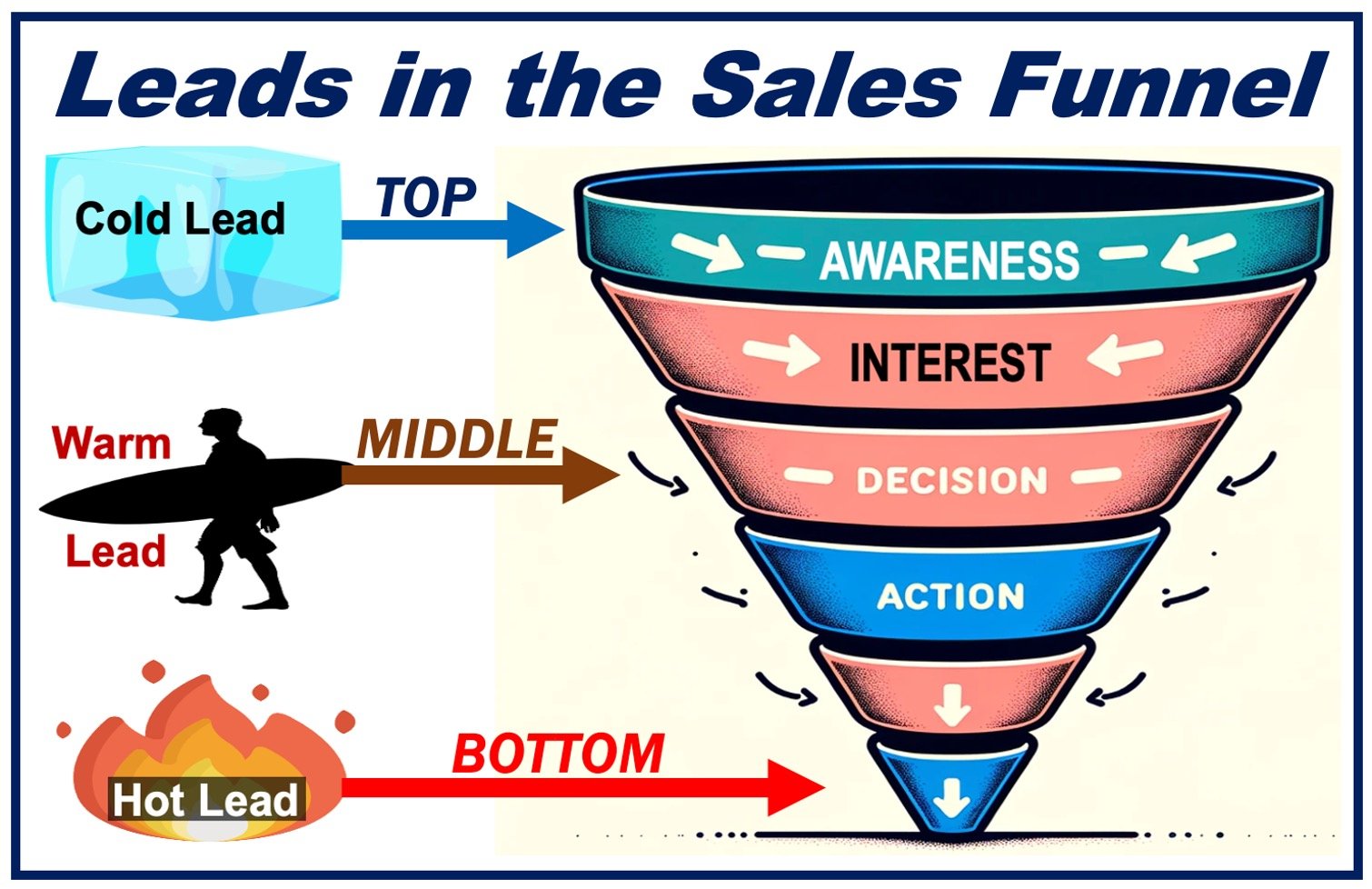In the world of sales, Leads are details of people’s or company’s names, addresses, emails, phone numbers, and other valuable data. These contacts may be a good fit for your company’s product or service. We refer to them as “Sales Leads” or simply “Leads.”
Leads represent various stages of the buying process. Most companies and salespeople identify them as cold, warm, or hot, reflecting their level of interest and probability of purchasing. A hot lead, for example, is the most likely to buy.
How salespeople allocate their time and resources depends on their understanding of the leads they have.
“A sales lead is a person, department, or company that may be a good fit for your product or service and has the authority to make that purchase. Without leads, you can’t sell anything, so they are vital to your sales process.”
Three types of sales leads
Let’s take a closer look at these three types of sales leads:
-
Cold leads
These individuals or entities have had little to no interaction with your company. They may not even know you exist.
You most likely got your cold leads through a mass marketing strategy such as canvassing (cold calling) or after an email campaign.
The salesperson’s aim with a cold lead is to spark interest, educate them about your product or service, and nurture them through the sales funnel. A skilled sales professional also knows when to remove a prospect from their contact list after a thorough evaluation.
-
Warm leads
This term refers to contacts who have shown some interest in what you are selling. Maybe they have signed up for a newsletter, responded to an email with a query, or attended a webinar.
Even though they have provided their contact information, they are not yet ready to make a purchase.
They require targeted follow-ups to build relationships, provide additional information, and gradually guide them towards becoming paying customers.
-
Hot leads
Salespeople are most excited when learning about a hot lead. These are the most sales-ready contacts. Like ripened fruits on a tree, they are “ready for picking.”
They have demonstrated a clear intent to purchase by initiating contact, i.e., approaching you first, asking detailed questions about your product, service, and/or offerings, or requesting a demo or quote.
The salesperson’s focus here is on closing the sale with the right offer and the best customer service possible.

Nurturing sales leads
Whether they are cold, warm, or hot, all sales leads need to be nurtured. This involves being in regular contact, engaging personally, and providing value at every interaction.
If you are good at nurturing, you will be able to convert a high percentage of cold and warm leads into warm and hot ones, respectively. Your aim with the hot leads is for them to become loyal customers, i.e., people who keep coming back for more (repeat sales).
The sales funnel
A sales funnel is a visual model outlining the journey from a lead to a customer, showing stages from initial contact to final sale.
Cold leads, for example, appear at the top of the funnel – they are about to enter it. Warm leads are in the middle, considering their options. Hot leads are at the bottom, ready to exit as customers.
For a successful sales strategy, it is important to understand this journey through the sales funnel.
Conclusion
In conclusion, leads are the lifeblood of sales. If you know how to identify what type they are and how to approach them, you will have a good conversion rate – a relatively high percentage of your leads will become customers.
Two Videos
These two YouTube videos come from our sister channel, Marketing Business Network or MBN. They explain what the terms “Sales Lead” and “Sales” mean using easy-to-understand language and examples:
-
What is a Sales Lead?
-
What are Sales?
